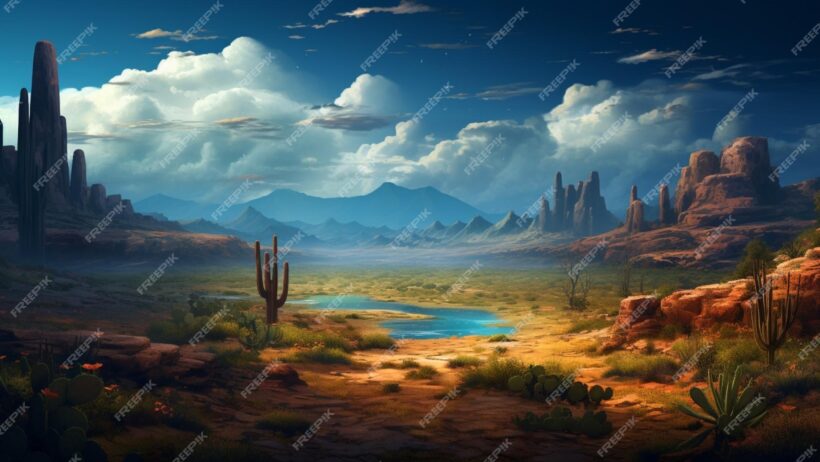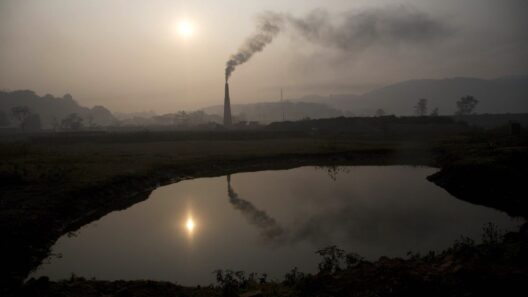Deserts are fascinating ecosystems characterized by extreme weather conditions, particularly their unique climatic patterns. The climate of deserts is largely delineated by both temperature and precipitation, driving the biological and geological features that make these arid landscapes so distinct.
To begin, it is essential to grasp the two primary classifications of desert climates: hot deserts and cold deserts. Hot deserts, often found within the subtropical high-pressure zone, are typically located around 20 to 30 degrees latitude. The Sahara Desert in Africa serves as a quintessential example. Characterized by blistering summers and mild winters, hot deserts receive scant rainfall, averaging less than 250 millimeters (about 10 inches) annually. The high solar radiation results in scorching temperatures that can soar above 38 degrees Celsius (100 degrees Fahrenheit) during the day, while nighttime temperatures can dip dramatically, exemplifying the deserts’ diurnal temperature variation.
In contrast, cold deserts, such as the Great Basin Desert in the United States, experience an altogether different climate. Predominantly situated in higher altitudes, cold deserts can endure harsh winters where temperatures plummet well below freezing. Although they also receive limited precipitation, often as snow, the stark temperature differences between summer and winter are salient. This climatic dichotomy is pivotal for understanding the flora and fauna that have adapted to thrive in such adverse conditions.
One of the most defining attributes of desert climates is the prevalence of dry days. The arid nature of these regions often results in prolonged periods of drought, creating a landscape that is inhospitable for many organisms. The evaporation rate exceeds precipitation, leading to desiccated soil and limited water availability. These climatic conditions shape the types of vegetation that can survive. Cacti and xerophytes are iconic survivors, demonstrating remarkable adaptations to conserve water and minimize transpiration. For instance, the saguaro cactus can store substantial quantities of water within its fleshy tissues, allowing it to endure prolonged dry spells.
The phenomenon of dry days is not merely a temporary aspect of desert life; it is a defining characteristic of desert ecosystems. Rainfall, when it occurs, could be sporadic and infrequent—often resulting in intense bursts of precipitation that can lead to flash floods. This paradox creates an environment where life has adapted profoundly, allowing for explosive growth of flora immediately following rain. The ephemeral blooms of wildflowers in a desert landscape after a rare rain event embody life’s resilience against the odds.
Transitioning from the heat of the day to the cool embrace of night, deserts offer another captivating aspect of their climatic character. Starry nights set apart these celestial voids as truly remarkable spectacles. The absence of urban light pollution allows for a sweeping view of the cosmos, where a tapestry of stars lights the night sky, providing opportunities for stargazing and astronomical observation. The clarity of the atmosphere, owing to minimal humidity and particulates, facilitates unparalleled visibility of celestial bodies.
The starry nights of the desert are not only a marvel for stargazers but also hold deep cultural significance. Various civilizations and indigenous peoples have long relied on the stars for navigation and agricultural practices. The nocturnal realm serves as a canvas filled with constellations that tell stories, imparting wisdom and guidance across generations. The palpable silence inherent to these desert nights amplifies the cosmic experience, engendering a profound connection to nature.
Despite their stark beauty and remarkable ecosystems, deserts are increasingly facing the repercussions of climate change. Rising global temperatures result in aggravated drought conditions, further straining water resources. The fragility of these ecosystems makes them particularly vulnerable to Human-induced changes. Alterations to precipitation patterns, intensified heat waves, and habitat fragmentation pose significant threats to the delicate balance of desert life. Moreover, desertification—a process in which once-fertile land becomes increasingly arid—has ripple effects on both local and global scales, exacerbating food insecurity and displacing marginalized communities.
Addressing these challenges necessitates a concerted effort to implement sustainable management practices. Efforts at land restoration, conservation of water resources, and reducing greenhouse gas emissions are imperative to mitigate the impacts on these arid ecosystems. Community-led initiatives can empower local populations to partake in scientific projects, ensuring that desert environments are kept intact for future generations to enjoy the brilliance of their dry days and starry nights.
In conclusion, the climate in deserts is a complex interplay of temperature, precipitation, and ecological adaptation, yielding a unique landscape characterized by dry days filled with challenges and nights adorned with countless stars. Understanding these climatic features is critical as we navigate the consequences of climate change and strive for sustainable practices that protect these remarkable ecosystems. The beauty of deserts lies not just in their stark landscapes but in the resilience of life that has found a way to thrive in some of the harshest conditions on Earth. By appreciating and protecting these arid environments, individuals can help ensure that the dry days will remain vibrant and the starry nights will continue to inspire awe for generations to come.








